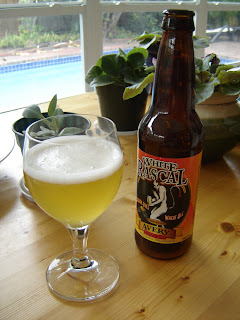
Do you have days when nothing seems to go right?
Please understand that I am not talking about the kind of day when your best friend is diagnosed with cancer. Those are awful, soul-crushingly bad days. Those are healing-is-going-take-awhile, we'll-get-through-this, let's-all-pray kinds of days that no food will fix.
No, in this post, I'm talking about the absurdly trivial bad days. The kind of day that is an index of minor irritations. The one-hour-wait-at-the-doctor's-office day, the I-banged-my-funny-bone-blue day, the where-in-creation-are-my-car-keys day, the ma'am-I-have-no-cash-to-pay-this-toll day.

You know what I mean. We all have them, and the fact that the aggravations are piddly-small doesn't help. I'm not zen about the small things. I get cranky when the lunch that I schlepped two sweltering blocks back to my office has mayo instead of mustard,
and I stub my toe,
and no one holds the elevator for me. I sulk.
Petty annoyance is a character flaw, I'm sure. You have a character flaw too, right?
Sometimes, I have enough poise to take a deep, calming breath and achieve some perspective. There is meaning in each of these hapless little moments, I just know it. If the cashier at the grocery store had not been
so bloody slow I might have missed the rainbow arching over that funny little church on my way home. If I'd had just a tiny amount of change--50 cents!--in my wallet, I would not have a funny story about how a sour-faced toll worker made me write a 50-cent check to the Florida Department of Transportation Turnpike Authority before letting me through (
she was so mean about it, too).

And, when I discovered that I did not have the right ingredients for a recipe that I wanted to try out (ricotta, how did you elude me?), I created this new recipe.
It's a brothy, aromatic bowl of shittake mushrooms sauteed in caramel-y Amontillado sherry and butter then heaped with Swiss chard over fresh fettuccine. Thyme and grated Pecorino bring it all home. Hello, gorgeous.

That's the thing about perspective: "what we see depends mainly on what we look for." (attributed to John Lubbock, English banker, politician, naturalist and archaeologist, 1834-1913)
Shittake Fettuccine with Amontillado Sauce10-12 large shittake mushrooms, sliced
1 1/2 cups
vegetable stock1 teaspoon fresh thyme
2 tablespoons Amontillado sherry (alternatively, you can use tawny port. The point is to use something with caramel notes)
1 shallot, chopped
1 large garlic clove, thinly sliced
2 tablespoons grated Pecorino
1 tablespoon olive oil
1 large leaf of Swiss chard, chopped into long ribbons
Salt, to taste
Pepper, to taste
1/2 pound of fresh fettuccine, recipe following (alternatively, you can use pre-packaged pasta)
To Make the Fettuccine Adapted from James McNair's Favorites
2 1/2 cups of all-purpose flour
3 eggs, room temperature
1 teaspoon of extra virgin olive oil
1/2 teaspoon of salt
Combine the eggs, oil, and salt in a mixer and blend well. Add 2 cups of the flour in 1/2 cup amounts and knead the dough in the mixer using a dough hook for about 3 minutes. Check the dough for stickiness. If the dough is very sticky, add more flour until it is no longer sticky. Form into a ball. Allow the dough to rest for 30 minutes, covered with a dish towel.
Divide the dough into 4 pieces. Run each piece through a pasta machine to flatten the dough into sheets, then, using a fettuccine slicing attachment, cut the dough into fettuccine strips.
Heat a pot of salted water to a boil. Add the fettuccine and boil for 3-5 minutes, until al dente. Drain and set aside.
For the Shittake-Amontillado SauceHeat the olive oil in a broad skillet over medium heat. Add the chopped shallot and stir to coat in the olive oil. Saute until translucent, stirring to prevent browning. Add the garlic and stir for 1-2 minutes. Do not allow it to brown.
Add the Amontillado and reduce for 1 minute. Add the vegetable stock and heat to a boil, then reduce to low heat. Add the thyme, mushrooms, and Swiss chard, as well as the salt and pepper to taste. Simmer for 3-5 minutes.
Serve the mushrooms over the fettuccine. Grate 1 tablespoon of Pecorino over each dish and serve.
Serves 2

















































